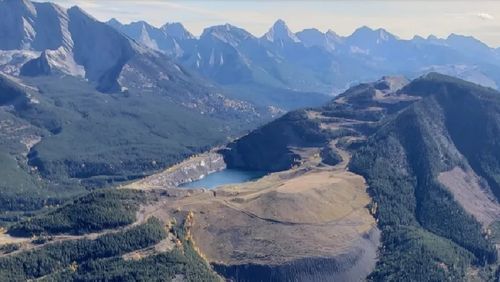CapturePoint LLC recently closed on its first 45Q tax credit direct transfer deal for CO2 captured from an ethanol facility in Kansas, a mechanism that will be a major component of the company’s earnings amid growth in CO2 capture and sequestration.
Meanwhile, the Allen, Texas-based CCUS developer could seek to raise approximately $600m as soon as next year for a sequestration hub in Louisiana, for which it has applied for two Class VI sequestration wells from the EPA, CEO Tracy Evans said in an interview.
Under the direct transfer deal deal, CapturePoint will transfer 45Q tax credits generated at the Arkalon ethanol facility in Liberal, Kansas to an unnamed buyer for 12 years. Since CapturePoint transports the CO2 to injection wells used for enhanced oil recovery, the company receives the 45Q benefit of $60 per ton for EOR activities.
At full capacity, the ethanol plant produces 250,000 metric tons of CO2 annually, but usually undergoes two turnaround processes per year, which reduces output.
The Arkalon facility had a previously installed carbon capture unit that was re-built by CapturePoint, a project that was funded from the company’s existing cash flows from its EOR business as well as draws on its $100m borrowing line, Evans said. Under 45Q, existing carbon capture facilities of which 80% or more are rebuilt can qualify for the tax credits.
The direct transfer of the 45Q tax credits was done at a discount, though Evans declined to disclose the amount.
Additionally, CapturePoint is capturing and removing CO2 from CVR’s Coffeyville fertilizer plant, also in Kansas, for which it completed a tax equity deal last year that opened up a stream of revenues.
Class VI wells
Both the Coffeyville and Arkalon plant operations are owned by the CapturePoint oil company, acquired along with oil and gas operations in 2017.
But CapturePoint has launched a carbon management subsidiary, CapturePoint Solutions, which will focus on industrial emissions to Class VI sequestration wells.
The subsidiary could seek to raise around $600m as soon as next year to build out a planned hub, the Central Louisiana Regional Carbon Storage Hub (CENLA), Evans said. The capital expenditure for the project includes a pipeline, five to seven capture facilities, and the sequestration site.
“We would love to do project finance, but we’d like to potentially start spending money now” versus waiting for a permit to construct, he said. “That seems to be the gating item for a lot of the project finance guys.”
He expects the project will take around two years to construct, thus to keep it moving, the company could spend money now on things like right-of-way and equipment using its own cash flow, he added, along with equity commitments from existing investors.
“The CapturePoint Solutions model is essentially based on only 45Q revenues,” Evans said. “Whether we’re taking them or whether somebody is paying us the transportation and sequestration fee, it’s still coming from the 45Q credits.”
CapturePoint Solutions has applied for three Class VI wells, two in Louisiana associated with the CENLA hub, and another in Oklahoma. Evans expects to have drafts of the Class VI wells from the EPA by late this year at the earliest, but Louisiana’s recently established primacy over the Class VI process could speed things up.
Evans said the company has already signed up 1.5 million tons of CO2 emissions at the CENLA hub, where the proposed sites each have 7.5 million tons of sequestration capacity annually.
“We’re still in a process of signing up emitters,” he said. “There’s additional capacity in the area, so we could easily expand to a third site.”
CapturePoint Solutions has also signed an agreement with Azure for a greenfield SAF plant in Kansas, where CapturePoint Solutions will tie in and take away CO2 to its planned Oklahoma site.




